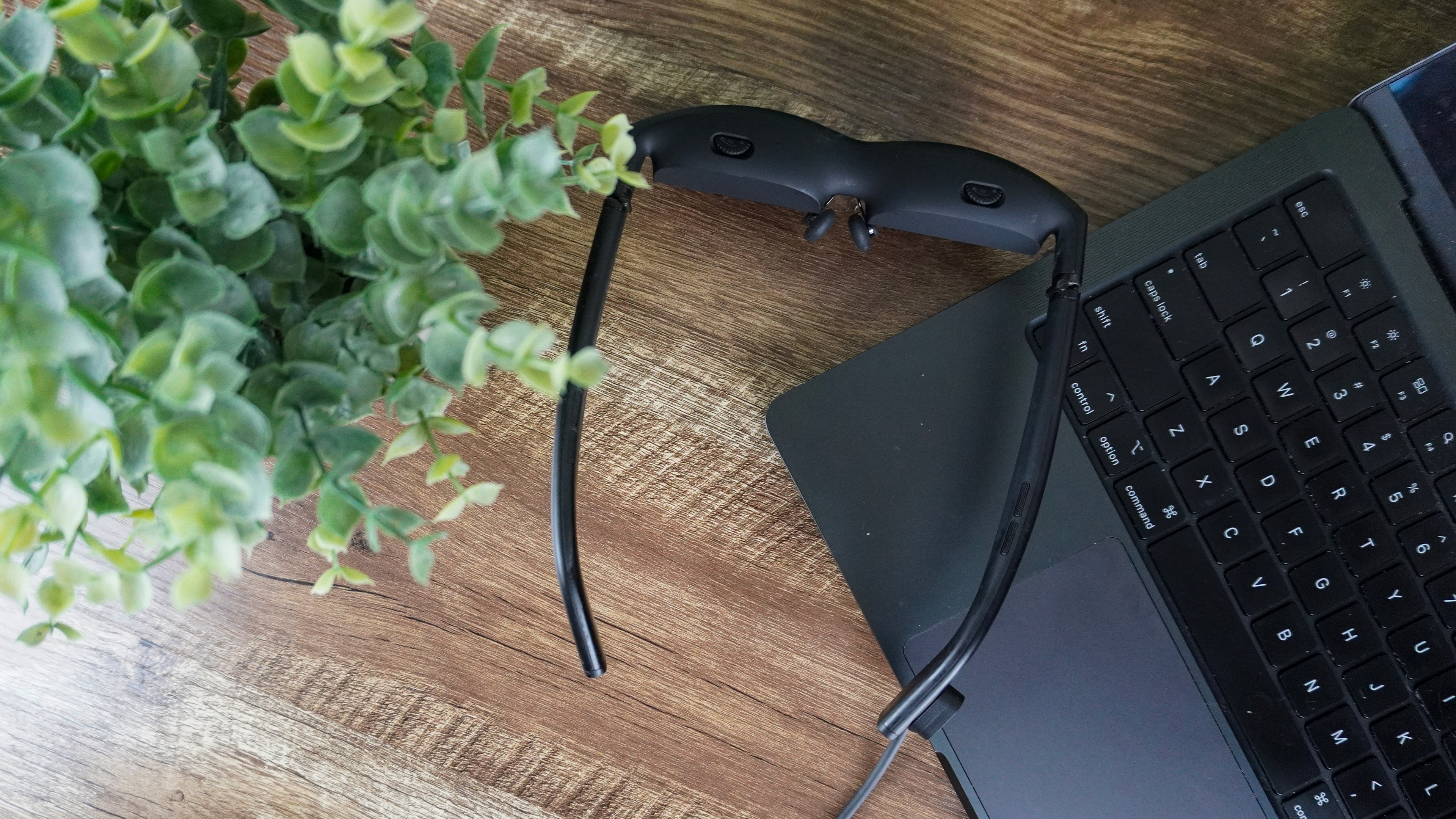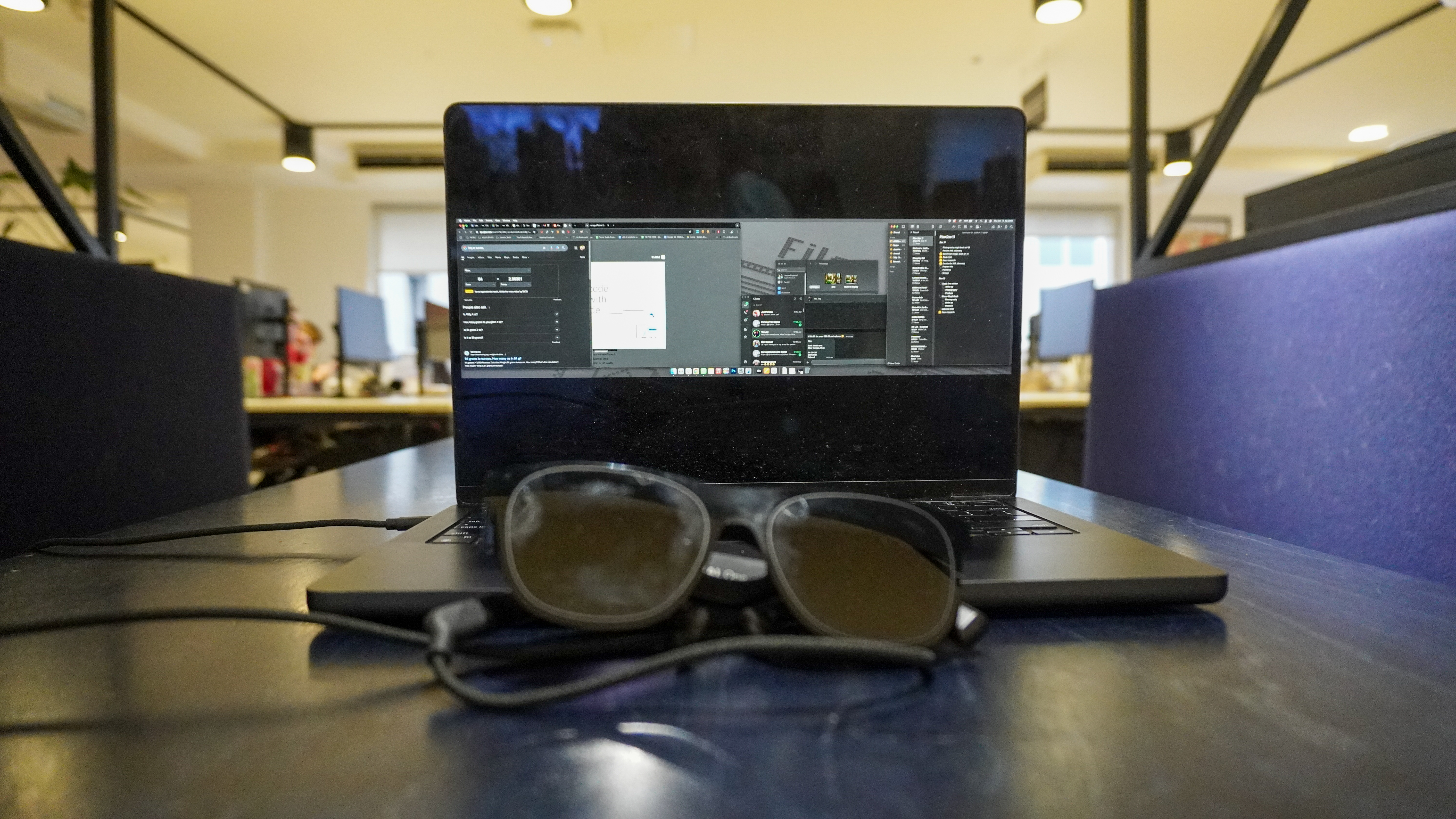Xreal One vs Viture Pro: Which AR glasses should you buy?
Which is the best of the best in AR glasses?

It's already been quite a year for AR glasses, and after a last-minute launch, we’re left with one question: should you buy the Xreal One or Viture Pro glasses?
These are two of the best smart glasses you can buy right now, and the competition is tight between the pair. Whether you’re a long haul traveler looking to play your Steam Deck without the neck pain of looking down at your screen, or someone who wants the best bits of spatial computing without paying $3,500 for the Apple Vision Pro, either the Xreal One or Viture Pro will serve you well.
But one pair has a slight edge over the other, and I’ll explain why by breaking down which specs reign supreme.
Xreal One vs Viture Pro: Specs
| Spec | Xreal One | Viture Pro |
| Size | 5.8 x 6.3 x 1.9 inches | 5.8 x 6.8 x 1.9 inches |
| Weight | 3 ounces | 2.8 ounces |
| Display | Sony Micro-OLED, 147-inch virtual screen with 1080p resolution, up to 600-nits of perceived brightness, software-based IPD adjustment | Sony Micro-OLED, 135-inch virtual screen with 1080p resolution, up to 1000 nits of perceived brightness, up to 120Hz refresh rate, adjustable for Myopia |
| Audio | Dual speakers tuned by Bose | Dual speakers tuned by Harman |
| Price | $499 | $459 |
Xreal One vs Viture Pro: Design and comfort

When it comes to the way AR glasses are built, I always look for the perfect blend of two things: comfort and subtlety. There’s a lot of tech packed into these glasses, so you want them to be wearable for hours on end for long-distance trips, while also being low-key enough that you can put them on without drawing any attention.
Both Xreal One and Viture Pro do both of these well, but there’s some smaller differences at play here. First off, the sleeker, all-black front of the Xreal One with those impressively thin lenses do make it a more low-profile design than the Viture, while still being comfortable all throughout the flight test.

However, the Viture Pros are slightly lighter — it’s only by 0.2 ounces but that can make a difference on ear fatigue — and there are adjustable myopia control dials atop each lens, which the Xreals don’t have. But in exchange for this additional comfort, you do get glasses that are a little larger on the face.
Honestly, it’s a toss up between these here. Both are comfortable to wear, but the Viture Pros have more versatility at the cost of subtlety, whereas the Xreal Ones are more low key while being slightly heavier. It really depends on what you’re looking for here.
Winner: Draw
Xreal One vs Viture Pro: Picture and sound

When you see one Sony Micro-OLED display, it’s easy to feel like you’ve seen them all. Upgrades have been incremental over time while we work forward to achieve that dream of a fully immersive, wide field-of-view. And when it comes to Xreal and Viture, these two are incredibly close specs-wise.
They both sport similar prism display tech for an AR picture that is vivid with an impressive contrast ratio, but Xreal manages to do a little more with it — a slightly wider field-of-view at 50 degrees does reduce fringing around the edges of the screen, and it is capable of running a 147-inch screen over Viture’s 135-inch. While those differences aren’t the most noticeable, the numbers do fall in the One’s favor.

On the audio side, things become a little more straightforward. While I’d always point you toward a pair of headphones when out and about (as the sound can get easily lost on a plane), the Xreal One take a clear lead with a sound profile that is loud and clear with a surprisingly impressive amount of bass.
Winner: Xreal One
Xreal One vs Viture Pro: Features

Viture Pros follow a simple formula to the majority of AR glasses you can buy today. On their own, they are a glorified portable external monitor that you wear on your face. To unlock more of the AR features, you need another device to do all the heavy lifting — like the Nebula app on iOS and Android.
Xreal One does things a little differently. With the X1 chip, a lot of those AR features are built directly into the glasses themselves with on-board controls. That means whatever laptop you’re connected to, you’re no longer constrained to whatever software control you get. Instead, you can pop up a full-blown 32:9 ultra wide display on anything. On top of that, you can change color temperature, brightness and contrast all on the specs.

On top of that, X1 also unlocks 3 DoF tracking for a far more stable picture with anything that you look at. If you're in a particularly turbulent flight, your eyes will thank you for that.
There is more to this puzzle too, including the Xreal Beam Pro being your portal into spatial content vs the Nebula app — the former is a smoother experience but costs $200 and requires a separate device, whereas the latter is just a free download on your current device. On top of that, Viture does have a neckband computer coming soon, which will unlock more spatial computing capabilities.
But at the time of writing, for the better all-in-one experience, the choice clearly points to Xreal.
Winner: Xreal One
Xreal One vs Viture Pro: Which AR glasses should you buy?

The Xreal One and Viture Pro are the two best pairs of AR glasses you can buy right now. But there are certain elements that put Xreal out ahead to make them the winners here.
That’s not to say there aren't some elements where Viture tops Xreal. For example, the IPD adjustment dials on the Viture glasses give you more finite control over viewability, the Pros are slightly lighter, and the SpaceWalker app gives you the important parts of Beam Pro’s experience to your phone without needing to pay $200 for another device.
But for that X1 chip’s capabilities, stronger picture quality, better sound output and sleeker design, there’s nothing better on the market right now than the Xreal One.
More from Tom's Guide
Sign up to get the BEST of Tom's Guide direct to your inbox.
Get instant access to breaking news, the hottest reviews, great deals and helpful tips.

Jason brings a decade of tech and gaming journalism experience to his role as a Managing Editor of Computing at Tom's Guide. He has previously written for Laptop Mag, Tom's Hardware, Kotaku, Stuff and BBC Science Focus. In his spare time, you'll find Jason looking for good dogs to pet or thinking about eating pizza if he isn't already.
